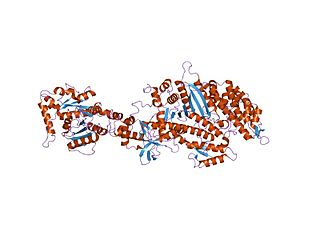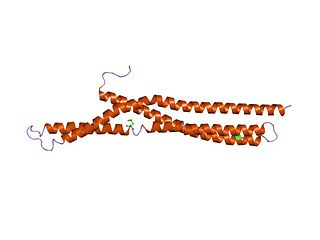| AMPH | |||||||||||||||||||||||||||||||||||||||||||||||||||
|---|---|---|---|---|---|---|---|---|---|---|---|---|---|---|---|---|---|---|---|---|---|---|---|---|---|---|---|---|---|---|---|---|---|---|---|---|---|---|---|---|---|---|---|---|---|---|---|---|---|---|---|
 | |||||||||||||||||||||||||||||||||||||||||||||||||||
| |||||||||||||||||||||||||||||||||||||||||||||||||||
| Identifiers | |||||||||||||||||||||||||||||||||||||||||||||||||||
| Aliases | AMPH , AMPH1, amphiphysin | ||||||||||||||||||||||||||||||||||||||||||||||||||
| External IDs | OMIM: 600418 MGI: 103574 HomoloGene: 121585 GeneCards: AMPH | ||||||||||||||||||||||||||||||||||||||||||||||||||
| |||||||||||||||||||||||||||||||||||||||||||||||||||
| |||||||||||||||||||||||||||||||||||||||||||||||||||
| |||||||||||||||||||||||||||||||||||||||||||||||||||
| |||||||||||||||||||||||||||||||||||||||||||||||||||
| |||||||||||||||||||||||||||||||||||||||||||||||||||
| Wikidata | |||||||||||||||||||||||||||||||||||||||||||||||||||
| |||||||||||||||||||||||||||||||||||||||||||||||||||
Amphiphysin is a protein that in humans is encoded by the AMPH gene. [5] [6]
| AMPH | |||||||||||||||||||||||||||||||||||||||||||||||||||
|---|---|---|---|---|---|---|---|---|---|---|---|---|---|---|---|---|---|---|---|---|---|---|---|---|---|---|---|---|---|---|---|---|---|---|---|---|---|---|---|---|---|---|---|---|---|---|---|---|---|---|---|
 | |||||||||||||||||||||||||||||||||||||||||||||||||||
| |||||||||||||||||||||||||||||||||||||||||||||||||||
| Identifiers | |||||||||||||||||||||||||||||||||||||||||||||||||||
| Aliases | AMPH , AMPH1, amphiphysin | ||||||||||||||||||||||||||||||||||||||||||||||||||
| External IDs | OMIM: 600418 MGI: 103574 HomoloGene: 121585 GeneCards: AMPH | ||||||||||||||||||||||||||||||||||||||||||||||||||
| |||||||||||||||||||||||||||||||||||||||||||||||||||
| |||||||||||||||||||||||||||||||||||||||||||||||||||
| |||||||||||||||||||||||||||||||||||||||||||||||||||
| |||||||||||||||||||||||||||||||||||||||||||||||||||
| |||||||||||||||||||||||||||||||||||||||||||||||||||
| Wikidata | |||||||||||||||||||||||||||||||||||||||||||||||||||
| |||||||||||||||||||||||||||||||||||||||||||||||||||
Amphiphysin is a protein that in humans is encoded by the AMPH gene. [5] [6]
This gene encodes a protein associated with the cytoplasmic surface of synaptic vesicles. A subset of patients with stiff person syndrome who were also affected by breast cancer are positive for autoantibodies against this protein. Alternate splicing of this gene results in two transcript variants encoding different isoforms. Additional splice variants have been described, but their full length sequences have not been determined. [6]
Amphiphysin is a brain-enriched protein with an N-terminal lipid interaction, dimerisation and membrane bending BAR domain, a middle clathrin and adaptor binding domain and a C-terminal SH3 domain. In the brain, its primary function is thought to be the recruitment of dynamin to sites of clathrin-mediated endocytosis. There are 2 mammalian amphiphysins with similar overall structure. A ubiquitous splice form of amphiphysin-2 (BIN1) that does not contain clathrin or adaptor interactions is highly expressed in muscle tissue and is involved in the formation and stabilization of the T-tubule network. In other tissues amphiphysin is likely involved in other membrane bending and curvature stabilization events.
Amphiphysin has been shown to interact with DNM1, [7] [8] [9] [10] [11] Phospholipase D1, [12] CDK5R1, [13] PLD2, [12] CABIN1 [14] and SH3GL2. [7] [15]

Clathrin is a protein that plays a major role in the formation of coated vesicles. Clathrin was first isolated and named by Barbara Pearse in 1976. It forms a triskelion shape composed of three clathrin heavy chains and three light chains. When the triskelia interact they form a polyhedral lattice that surrounds the vesicle, hence the protein's name, which is derived from the Latin clathrum meaning lattice. Coat-proteins, like clathrin, are used to build small vesicles in order to transport molecules within cells. The endocytosis and exocytosis of vesicles allows cells to communicate, to transfer nutrients, to import signaling receptors, to mediate an immune response after sampling the extracellular world, and to clean up the cell debris left by tissue inflammation. The endocytic pathway can be hijacked by viruses and other pathogens in order to gain entry to the cell during infection.

Dynamin is a GTPase responsible for endocytosis in the eukaryotic cell. Dynamin is part of the "dynamin superfamily", which includes classical dynamins, dynamin-like proteins, Mx proteins, OPA1, mitofusins, and GBPs. Members of the dynamin family are principally involved in the scission of newly formed vesicles from the membrane of one cellular compartment and their targeting to, and fusion with, another compartment, both at the cell surface as well as at the Golgi apparatus. Dynamin family members also play a role in many processes including division of organelles, cytokinesis and microbial pathogen resistance.

In molecular biology, BAR domains are highly conserved protein dimerisation domains that occur in many proteins involved in membrane dynamics in a cell. The BAR domain is banana-shaped and binds to membrane via its concave face. It is capable of sensing membrane curvature by binding preferentially to curved membranes. BAR domains are named after three proteins that they are found in: Bin, Amphiphysin and Rvs.
Synaptojanin is a protein involved in vesicle uncoating in neurons. This is an important regulatory lipid phosphatase. It dephosphorylates the D-5 position phosphate from phosphatidylinositol (3,4,5)-trisphosphate (PIP3) and Phosphatidylinositol (4,5)-bisphosphate(PIP2). It belongs to family of 5-phosphatases, which are structurally unrelated to D-3 inositol phosphatases like PTEN. Other members of the family of 5'phosphoinositide phosphatases include OCRL, SHIP1, SHIP2, INPP5J, INPP5E, INPP5B, INPP5A and SKIP.

Myc box-dependent-interacting protein 1, also known as Bridging Integrator-1 and Amphiphysin-2 is a protein that in humans is encoded by the BIN1 gene.

Epidermal growth factor receptor substrate 15 is a protein that in humans is encoded by the EPS15 gene.

AP-2 complex subunit mu is a protein that in humans is encoded by the AP2M1 gene.

Dynamin-2 is a protein that in humans is encoded by the DNM2 gene.

AP-2 complex subunit alpha-1 is a protein that in humans is encoded by the AP2A1 gene.

Intersectin-1 is a protein that, in humans, is encoded by the ITSN1 gene.

Dynamin-1 is a protein that in humans is encoded by the DNM1 gene.

AP-2 complex subunit alpha-2 is a protein that in humans is encoded by the AP2A2 gene.

Endophilin-A1 is a protein that in humans is encoded by the SH3GL2 gene.

Sorting nexin-9 is a protein that in humans is encoded by the SNX9 gene.

Endophilin-A3 is a protein that in humans is encoded by the SH3GL3 gene.

Endophilin-A2 is a protein that in humans is encoded by the SH3GL1 gene.

Clathrin coat assembly protein AP180 is a protein that in humans is encoded by the SNAP91 gene.

Endophilin-B1 is a protein that in humans is encoded by the SH3GLB1 gene. Endophilin-B1 belongs to the Bin/Amphiphysin/Rvs167 (BAR) family of proteins and plays a critical role in mitochondrial fission and fusion, as well as in autophagy and apoptosis. Loss of functional endophilin-B1 is seen in many different forms of cancer. The link between carcinogenesis and dysregulation of cell death pathways suggests that endophilin-B1 serves a critical tumor suppressor role in the cell, although the underlying mechanisms are not known.
Bulk endocytosis refers to a form of endocytosis of synaptic vesicles at nerve terminals. In bulk endocytosis, compared to clathrin-mediated endocytosis, a larger area of presynaptic plasma membrane is internalised as cisternae or endosomes from which multiple synaptic vesicles can subsequently bud off. Bulk endocytosis is activated specifically during intense stimulation, such as during high-frequency trains of action potentials or in response to membrane depolarization by high extracellular concentrations of potassium.
SacI homology domain is a family of evolutionarily related proteins.